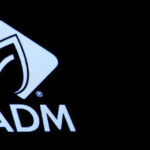- November 16, 2022
- No Comment
- 169
What is Blockchain Technology and How Can We Use this in Other Applications?

Blockchain technology is a type that records and stores data. The buzzword blockchain dominates any discussion about future technology. It is used to describe everything from the potential of cryptocurrencies to the new possibilities of cybersecurity. Although there are many uses for blockchain technology, few people know what it is.
Transactions were recorded in writing ledgers in the past and kept in banks. Auditing traditional ledgers were possible, but only for those who had privileged access. Blockchain has taken these concepts and made them accessible to all by eliminating the secrecy surrounding how transaction data was handled.
A blockchain, in its most basic form, is a distributed listing of transactions that is continuously updated and reviewed. It can be used to track and record any value in a distributed network that spans multiple entities and locations. This creates a global spider web of connected computers.
Blockchain technology is often associated with cryptocurrency, but it’s not limited to the digital asset marketplace. Its unique ability to store and add data can be used in many other industries.
What is a Blockchain?
A blockchain can be divided into two parts: the block or the chain.
A block is a set of data that are linked to each other chronologically in a virtual network. A blockchain can be described as a train with multiple carriages that are connected together in a line. Each carriage has a certain amount of data. Like passengers in real trains, blocks can only hold a limited amount of data before they become full.
Each block contains a timestamp that makes it clear when the data was stored and recorded. This is vital information for data such as transaction or supply chain data, where you need to know exactly when a package or payment was processed.
How Many Copies do you Have?
Every person that runs a computer and contributes to the network, also called a “node”, keeps their own copy of the blockchain. They regularly check with other nodes to ensure everyone has the same data. It ensures that there is no single point for failure by having every contributor keep their own copy. This incredible layer of security makes it virtually impossible for malicious agents or hackers to alter the data stored on blockchains.
A hacker group would need to gain access to every network contributor to modify any transactions on the blockchain.
The blockchain is transparent, unlike traditional financial records databases that are kept by institutions. It can be shared, distributed, and shared across networks and, in some cases, made fully public. The blockchain can be a single source for truth by prioritizing transparency in transactions and the storage of information.
What Data is Added to a Blockchain?
Blockchain is not only transparent for data but also secures it. Here’s an example: Using Bitcoin, this is how a transaction gets added to a new block.
A transaction is sent by a bitcoin user. It creates a message with the sender and receiver’s public addresses, and the amount being transacted. This data is then added to by the sender, who creates a hash (which turns it into a code of fixed length). This creates a digital signature that confirms that the sender is the owner of the bitcoin. The Bitcoin network is governed by miners who are able to discover new blocks using proof-of-work. They then create a batch transaction from the mempool to verify that each sender has the correct amount of bitcoin. Finally, they run the data through software to ensure the package data (digital signatures and messages, public keys, and public keys) are valid. Finally, broadcast the new block to the network to allow other miners to double-check the validity of everything.
Blockchain Technology Can Also be Used in Other Applications
Blockchain eliminates the need to have intermediaries such as banks. Peer-to-peer networks eliminate the need for intermediaries and allow transactions to be secured, cutting down costs and being reviewed by anyone.
Blockchain technology can be used for many purposes beyond financial. The blockchain is being used by hospitals to improve accuracy and track patient records. It is used by agricultural firms to track the supply chain for food. Smart contracts use it to keep track of all agreements and changes. It has been used to authenticate, trade, and sell original digital art pieces.
Blockchains are becoming an integral part of our lives, work, and interactions with digital information. As with any other revolutionary technology, there are many standards and the impact of blockchains is still being determined. It is certain that it will be around for the long term.








